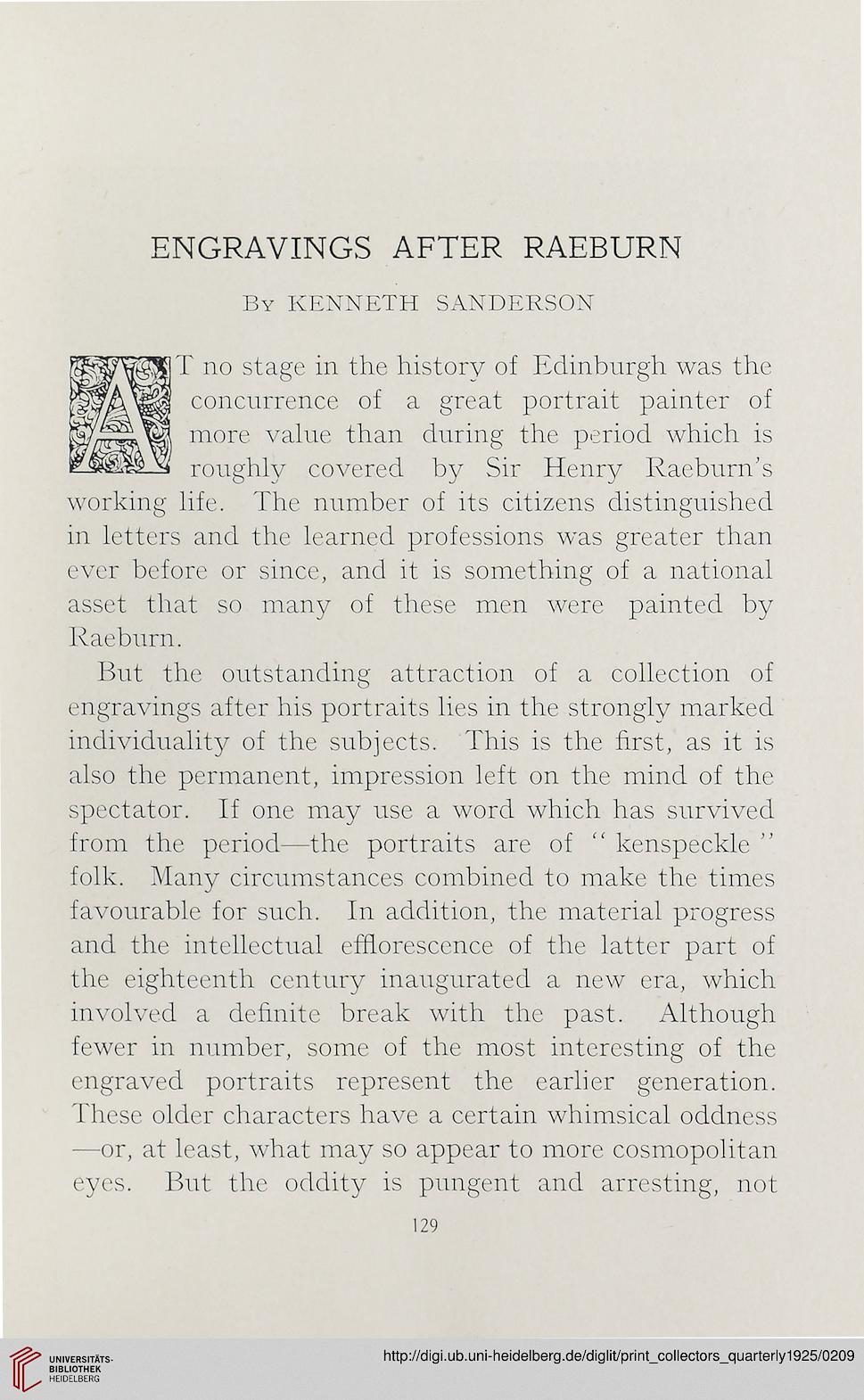ENGRAVINGS AFTER RAEBURN
By KENNETH SANDERSON
T no stage in the history of Edinburgh was the
concurrence of a great portrait painter of
more value than during the period which is
roughly covered by Sir Henry Raeburn’s
working life. The number of its citizens distinguished
in letters and the learned professions was greater than
ever before or since, and it is something of a national
asset that so many of these men were painted by
Raeburn.
But the outstanding attraction of a collection of
engravings after his portraits lies in the strongly marked
individuality of the subjects. This is the first, as it is
also the permanent, impression left on the mind of the
spectator. If one may use a word which has survived
from the period—the portraits are of “ kenspeckle ”
folk. Many circumstances combined to make the times
favourable for such. In addition, the material progress
and the intellectual efflorescence of the latter part of
the eighteenth century inaugurated a new era, which
involved a definite break with the past. Although
fewer in number, some of the most interesting of the
engraved portraits represent the earlier generation.
These older characters have a certain whimsical oddness
—or, at least, what may so appear to more cosmopolitan
eyes. But the oddity is pungent and arresting, not
129
By KENNETH SANDERSON
T no stage in the history of Edinburgh was the
concurrence of a great portrait painter of
more value than during the period which is
roughly covered by Sir Henry Raeburn’s
working life. The number of its citizens distinguished
in letters and the learned professions was greater than
ever before or since, and it is something of a national
asset that so many of these men were painted by
Raeburn.
But the outstanding attraction of a collection of
engravings after his portraits lies in the strongly marked
individuality of the subjects. This is the first, as it is
also the permanent, impression left on the mind of the
spectator. If one may use a word which has survived
from the period—the portraits are of “ kenspeckle ”
folk. Many circumstances combined to make the times
favourable for such. In addition, the material progress
and the intellectual efflorescence of the latter part of
the eighteenth century inaugurated a new era, which
involved a definite break with the past. Although
fewer in number, some of the most interesting of the
engraved portraits represent the earlier generation.
These older characters have a certain whimsical oddness
—or, at least, what may so appear to more cosmopolitan
eyes. But the oddity is pungent and arresting, not
129




